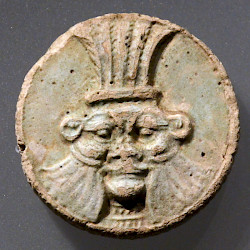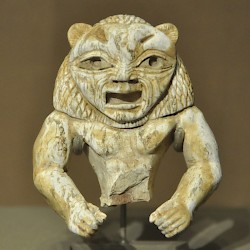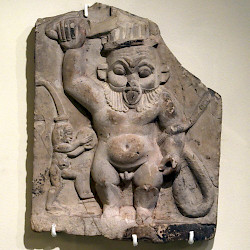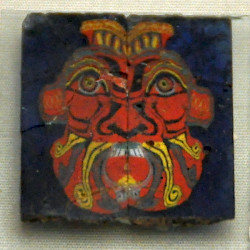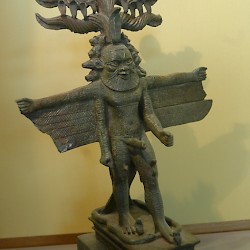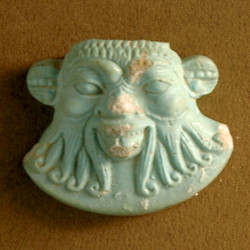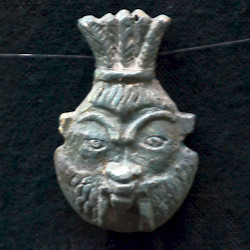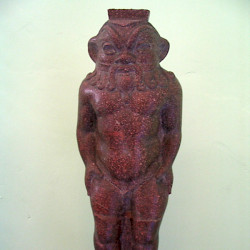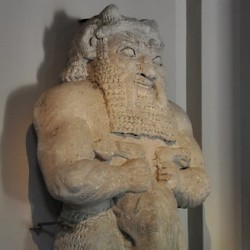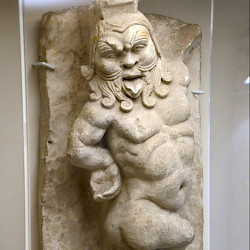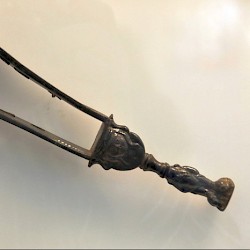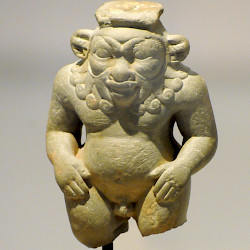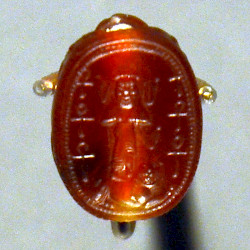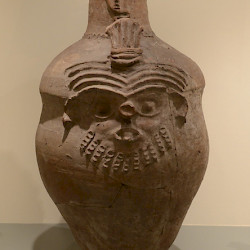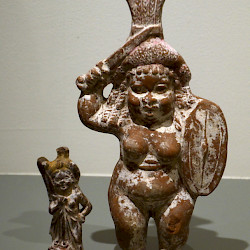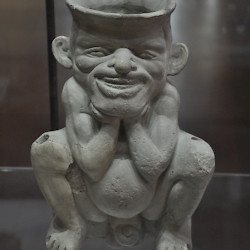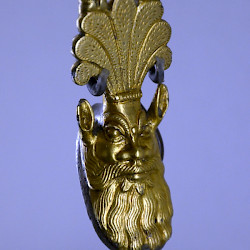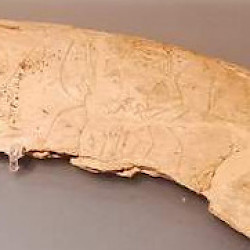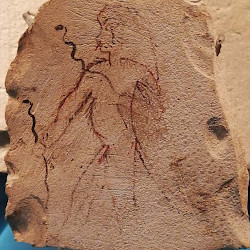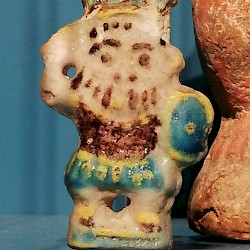Bes
Bes or Bisu: popular ancient deity, originally from Egypt.
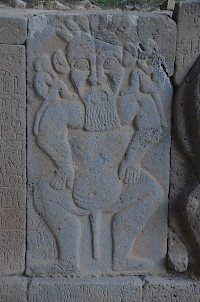
The odd-looking gentleman on the picture to the right is the god Bes. The relief was excavated in Aslantaş, the ancient Neo-Hittite city of Azitawatay, where it guarded one of the city gates. It was made towards the end of the eighth century BCE.
The location, in southern Turkey, is remarkable because Bes is considered an Egyptian god, although he had no temples in that country by the end of the eighth century, and he remained conspicuously absent from the Egyptian state cult. However, this goblin-like deity had already been venerated for centuries - the oldest representation is from the pyramid of king Sahura in Abusir - and was one of the popular cults of the people of ancient Egypt. Originally called Aha and already popular in the Levant in the Late Bronze Age, his cult spread to Punic Sicily and Ibiza in the fifth century, and to Iran and Armenia in the Hellenistic period and all over the Mediterranean under the Roman Empire.
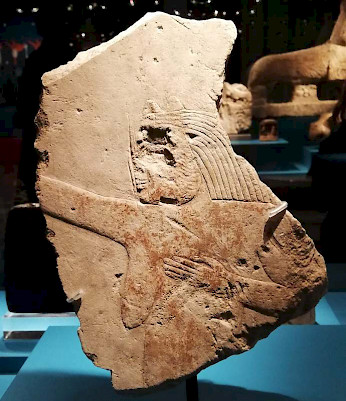
Bes was a so-called "apotropaic" god, which means that he fended off evil. He protected pregnant women, but also fought wild animals, and it is of course no coincidence that he garded the city gate of Aslantaş, where he had to keep out hostile forces.
Within the Egyptian pantheon, Bes was a domestic god, comparable to the sphinx-like deity Tutu and the hippopotamus goddess Tawaret. While the great gods - Amun, Osiris, Isis - were keeping the universe intact and were only accessible through the Egyptian king, domestic gods were helping the humans. Therefore, he is often shown on amulets and as support (e.g., as a column supporting a roof).
Bes fends off evil. To increase the shock effect that kept danger away, Bes was depicted frontally, which was common in neither Egyptian nor Neo-Hittite art. Sometimes he was shown while he was dancing, which gives a funny effect, because he is also depicted with crooked limbs and a large penis. His head was too large, he had bulging eyes, and he wore a feather crown and sometimes a dagger. Often, he had lion's manes, an animal tail, and an outstretched tongue. On the Neo-Hittite relief, he carries two monkeys on its shoulders. Sometimes he is shown with Beset, a naked dancer who is essentially Bes himself in a female form.
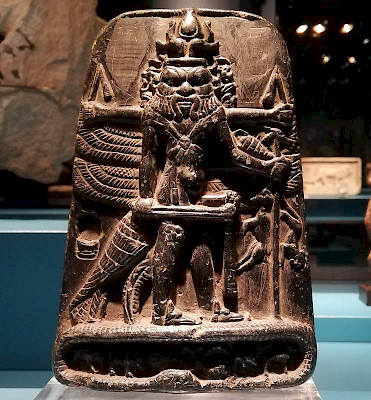
Because Bes belongs to popular religion, we may expect magic rituals, and indeed, from the Ptolemaic period (the three centuries BCE), we have magic stelas in which the deity is shown with attributes of several other gods (e.g., Horus and Tutu). In this way, a figure was created that had more power than Bes alone. The fact that Bes was already facing the spectator made the newly created figure even easier for the magician to address.
In one of the Egyptian myths, the goddess Hathor has decided to leave her father, the sun god Ra, and has fled to Nubia. Bes, always ready to help in domestic matters, is ordered to bring her back and invites her for a party. Dancing and dancing, and giving her a bit too much to drink, he manages to lure her back to the north, to Egypt, to her parents. Ever since, Bes has been a servant of Hathor and is shown with musical instruments. His portrait is also shown on bottles.
